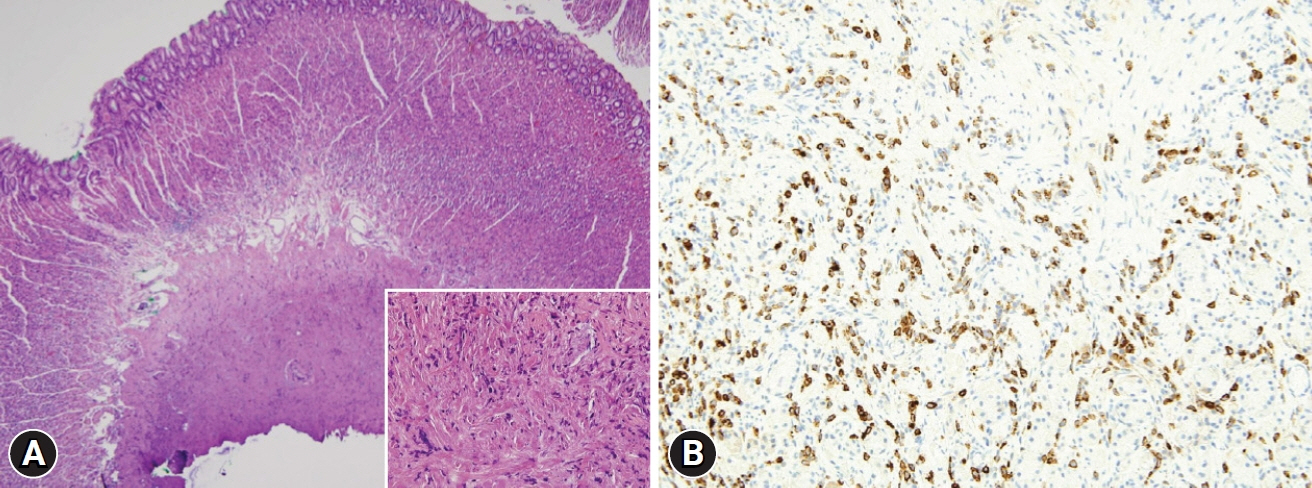Clin Endosc.
2022 May;55(3):463-464. 10.5946/ce.2020.239.
Metastasis of breast cancer presenting as enlarged folds in the stomach
- Affiliations
-
- 1Department of Internal Medicine, Pusan National University College of Medicine, Busan, Korea
- 2Biomedical Research Institute, Pusan National University Hospital, Busan, Korea
- 3Department of Pathology, Pusan National University College of Medicine, Busan, Korea
- KMID: 2529971
- DOI: http://doi.org/10.5946/ce.2020.239
Figure
Reference
-
1. McLemore EC, Pockaj BA, Reynolds C, et al. Breast cancer: presentation and intervention in women with gastrointestinal metastasis and carcinomatosis. Ann Surg Oncol. 2005; 12:886–894.2. Yim K, Ro SM, Lee J. Breast cancer metastasizing to the stomach mimicking primary gastric cancer: a case report. World J Gastroenterol. 2017; 23:2251–2257.3. Honma N, Horii R, Iwase T, et al. Clinical importance of estrogen receptor-beta evaluation in breast cancer patients treated with adjuvant tamoxifen therapy. J Clin Oncol. 2008; 26:3727–3734.
- Full Text Links
- Actions
-
Cited
- CITED
-
- Close
- Share
- Similar articles
-
- An Unusual Case of Gastric Cancer Presenting with Breast Metastasis with Pleomorphic Microcalcifications
- Bladder Cancer Metastasis to the Breast in a Male Patient: Imaging Findings on Mammography and Ultrasonography
- A case of stomach metastasis from breast cancer
- Breast Cancer Metastasis to the Stomach Resembling Early Gastric Cancer
- Occult Invasive Lobular Carcinoma of Breast Detected by Stomach Metastasis: A Case Report



